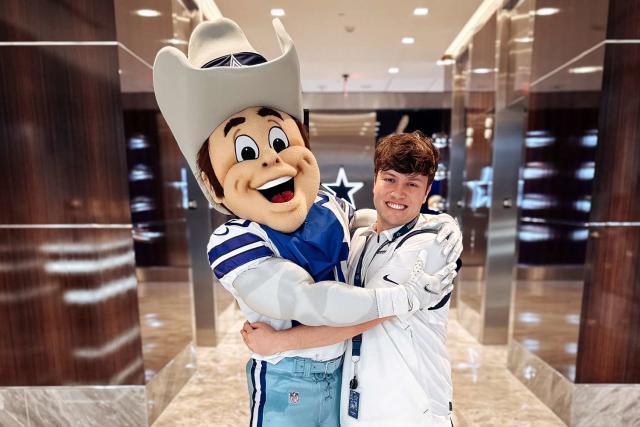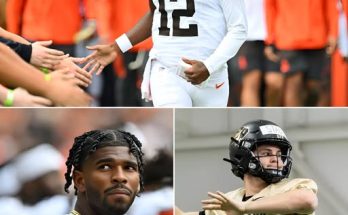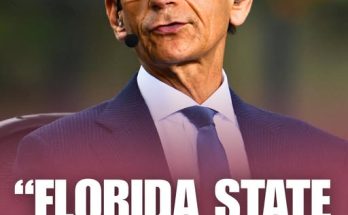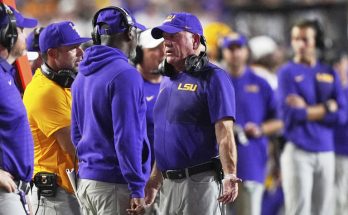Former Dallas Cowboys Mascot Rowdy Reveals Strict Rules He Had to Follow and How Much He Was Paid Per Game
The Dallas Cowboys are one of the most iconic and successful teams in NFL history, and their brand is instantly recognizable across the globe. With a deep-rooted tradition in American football culture, the Cowboys have had their fair share of notable players, unforgettable games, and memorable moments. However, there is one figure that has often gone under the radar in the history of the team’s fan engagement efforts—the mascot, Rowdy.
Rowdy has been a central part of the Cowboys’ family for many years, entertaining fans at games and helping to boost team spirit. However, the man behind the mascot suit, who played Rowdy for a significant period, recently came forward to reveal some surprising details about the job, including the strict rules he had to follow and how much he was paid per game. His revelations paint a fascinating picture of the role of a sports mascot and the challenges that come with it, beyond the colorful costumes and mascot antics that fans usually see.
In this article, we delve deep into the life of Rowdy, the mascot of the Dallas Cowboys, and what the job entailed for the person who brought the character to life.
The Origin of Rowdy
Before diving into the rules and compensation, it’s important to understand Rowdy’s backstory. Rowdy was first introduced as the Dallas Cowboys’ official mascot in 1996. The character was designed to be a fun, energetic cowboy figure who could connect with fans, particularly the younger ones, and serve as a source of entertainment during the games.
Rowdy’s persona was built around the typical cowboy archetype—loud, bold, and full of energy. He was characterized by his cowboy hat, big smile, and always active presence. Rowdy was often seen dancing, interacting with fans, and hyping up the crowd, creating an electric atmosphere at Cowboys’ home games.
For the person in the suit, Rowdy became a demanding job that required an intense commitment to physicality, appearance, and brand representation. Over the years, Rowdy’s role evolved, but the mascot has remained a fixture in the Dallas Cowboys’ game-day experience.
The Man Behind the Mask
While Rowdy is a beloved figure in Cowboys’ lore, few know the identity of the man who spent years inside the suit. That is, until now. A former performer who donned the Rowdy suit has finally spoken out about what the job was like behind the scenes.
In his candid revelation, the former mascot shared the unique challenges and the peculiar rules that came with his role. He disclosed not only the physical demands of the job but also the creative and logistical constraints placed upon him, all of which were designed to maintain the consistency and professionalism that the Cowboys brand is known for.
Strict Rules for the Rowdy Character
According to the former mascot, the job of being Rowdy involved a set of extremely strict guidelines. These rules were not only meant to maintain the mascot’s image but also to ensure that the Dallas Cowboys’ brand remained intact.
- No Talking: Perhaps one of the most surprising rules was the strict prohibition on speaking. The Rowdy mascot was not allowed to talk, communicate with fans verbally, or make any sounds other than what was made through gestures and movements. This was a key part of maintaining Rowdy’s mystique and ensuring that the character’s personality came through in a non-verbal way. Rowdy had to rely on exaggerated body language, facial expressions (through the costume’s face openings), and physical interactions with fans to convey emotion and personality.
“When you’re in that suit, you’re essentially a silent actor,” the former mascot explained. “Everything you do has to come across through gestures, movement, and sometimes a little bit of improv. It’s a unique skill, but it’s also incredibly demanding. You can’t use your voice, and you have to make sure that your actions speak louder than anything you could say.”
- No Interactions with Other Mascots: Another rule that might seem surprising is that Rowdy was not allowed to interact with other mascots, whether they were from other teams or from other promotional events. The reason for this restriction stemmed from the Cowboys’ desire to maintain Rowdy’s individuality and status as a unique representative of the team. Having Rowdy mingle with other mascots could dilute the impact of his presence or detract from the character’s exclusive connection with the Cowboys brand.
- Strict Costume Regulations: As with many professional mascots, the Rowdy costume was an essential part of the job. It had to look perfect every single time. The costume was also quite cumbersome, making it difficult to move around in. The former Rowdy performer explained that there were strict requirements for how the costume had to be maintained. Not only did the suit have to be cleaned and kept in good condition, but the performer also had to ensure that Rowdy always appeared larger than life, which meant having to stay active and engage with fans during the entire length of the game.
“There’s a lot of physical exertion involved in being Rowdy. The costume was heavy, and it wasn’t exactly designed for comfort. Every movement you made had to be calculated because if you lost your balance or didn’t have the right posture, it would show in the way Rowdy appeared,” he said.
- No Personal Identity: The anonymity of the Rowdy performer was crucial. Fans weren’t supposed to know who was inside the suit. The rule against personal identity meant that the performer had to live in complete secrecy about their role. This rule was particularly difficult because Rowdy had a significant fan base, and many people wanted to meet the person behind the costume. However, the Cowboys organization kept the mascot’s identity under wraps to maintain the allure and mystique of Rowdy.
“It was a little odd sometimes, especially when I’d run into people who were huge fans of Rowdy. They’d ask me to take photos or sign autographs, but I had to respectfully decline. The Cowboys made sure that Rowdy’s identity was a mystery,” he shared.
The Physical Demands of the Job
The job wasn’t all about strict rules and guidelines—being Rowdy also required a significant level of physical stamina. According to the former mascot, the physical demands of the role were immense. He explained that being inside the mascot suit for hours at a time was a grueling task, requiring endurance, flexibility, and strength.
“Imagine running around for hours at a time, jumping, dancing, doing tricks, and engaging with thousands of fans—all while wearing a heavy costume. It was exhausting, but it was also incredibly rewarding,” he said.
One of the most physically demanding aspects was staying hydrated and cool. The suit was made from materials that did not breathe easily, leading to excessive sweating. The former mascot mentioned that there were strict protocols to avoid dehydration or overheating. “There were times when I would be in that suit for hours without taking a break. You’d have to stay hydrated, take quick rests in the shadows, and even have ice packs on hand to cool down.”
How Much He Was Paid Per Game
Perhaps one of the most interesting revelations came when the former mascot spoke about how much he was paid for each game. Many people assume that sports mascots are paid hefty salaries due to their high-profile nature and the amount of work they put in. However, the truth about Rowdy’s compensation might surprise you.
According to the former mascot, he was paid a flat rate per game. “I was paid $150 per game,” he explained. “That’s not a lot, especially when you factor in the physical exertion and time commitment involved. But it was a labor of love. I was passionate about what I did, and I loved the idea of being part of the Cowboys family.”
It’s worth noting that $150 per game might not sound like much, but the job came with other perks, including the thrill of performing in front of thousands of fans and being a part of one of the most famous NFL teams in history. The mascot also had opportunities to appear at corporate events, promotions, and community outreach programs, which could increase his earnings.
Despite the relatively modest pay, the former Rowdy performer emphasized that the job was more about the experience than the paycheck. “You’re not doing it for the money. You’re doing it because you want to be part of something bigger than yourself. The Dallas Cowboys are a brand with a lot of pride, and getting to represent that was an incredible honor.”
The Legacy of Rowdy
Today, Rowdy remains one of the most iconic sports mascots in the NFL. His lively and energetic persona continues to energize Cowboys fans, making every game experience a little more exciting. The man behind the mask, though, remains a part of the Cowboys’ legacy in his own right. The former Rowdy performer’s story is a testament to the behind-the-scenes effort that goes into creating the magic that fans experience during a Cowboys game.
While Rowdy may not have been the highest-paid member of the Cowboys family, the impact he had on fans and the team cannot be underestimated. His role in creating a high-energy atmosphere, engaging with fans, and embodying the spirit of the Dallas Cowboys made him an invaluable asset to the team—and one that will be remembered for years to come.
As the Dallas Cowboys continue to be one of the most beloved teams in the NFL, Rowdy’s legacy as their mascot will undoubtedly remain a cherished part of their history.



